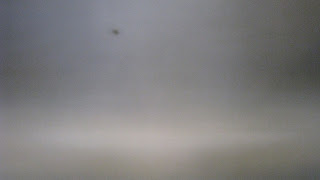
At 6.30am Monday morning I arrived at the Firenze train station to find that there was a transport strike in Italy. As a result my departure from Firenze was delayed by 2hrs. However, when I eventually managed to board a train bound north it was only standing room only. At 1130am I arrived at Venezia Mestre and waited with all the other frustrated travelers at the train station until 1600pm. Then when I went to purchase my train ticket for Pordenone (Friuli) someone suggested I visit Venezia. With winter approaching dusk normally settles around 1630-1700pm, so I was somewhat reluctant to take on the spontaneous adventure, but I was also fatigued with sitting at the train station knitting, people watching and drinking lattes so within 10minutes I was on the last train to Venezia.
On Wednesday morning I traveled to Udine to visit the Teatro Galleria d'Arte Moderna. The gallery has an impressive collection of 19th century paintings that were exhibited in the IV Biennale Internazionale d'Arte di Venezia in 1910. It was interesting to note the difference in the artworks from northern Italy (i.e. Veneto) as compared to central Italy (i.e. Lazio, Toscana) and southern Italy (i.e. Campania). Generally, I found that the artists from northern Italy used lighter (pastel-like) colours, that the works from central Italy were painted with an impasto style and more expressive in their brush strokes and that the artworks from southern italy were thematically more sober, painted in darker tones and with greater precision.
Northern Italian artists: (top) Crepuscolo by Vollet (1901); (middle) La Scaccia delle anitre by Tommasi (1896); (lower). Southern artists: Gli ultimi gironi di Domenica Morelli [detail] by Balestrieri (1904); (bottom) I due vecchi [detail] by Vasary (1901).
The following three paintings are from a modern artschool in Fruili and were most impressive. I particulary like the image of the provincial man drinking from a street tap by Pizzinato. Although the use of green, purple and blue is evident, it dosen't dominate the art work or detract from it's sensitive and sponateous depiction of ordinary life.
Spigolatrice by Anzii [Udine] (2000) (top); Ritratto di donna friulana by Giussi [Udine] (1955) (middle); Uomo che beve by Pizzinato (1958) (bottom).
The contemporary artworks were very interesting, hopefully these images illustrate the different genera and diversity of works.
Alluminio e quandri a collage by Aluiami [Udine] (1982) (top); Senzo titolo tecnica mista by Patrone (1985) (middle); Meridiano zero (acrilico e terre su tela) by Sedmach [Trieste] (1996) (bottom).
Wrapped woman by a Christo (1977) (above); litografia Nudio gigcente by Simon (1963) (below).

In the afternoon I went to Arta Terma (Fruili) near the Italian-Austrian border for a hot stone massage and thermal bath. This former Roman town was built close to hot sulphur springs that were used until the Middle Ages. It was divine. The treatment was professional, therapeutic and luxurious. As I lay in the bath, my thoughts drifted away. Outside it was raining and misty and I felt like I was in Dayelsford in Victoria.
In the evening I went to dinner with Graziella and Egilio. It was a lovely opportunity to be together. We talked about Sedegliano, what my dad was like as a young man and exchanged many stories. Another delightful evening.
On Thursday morning I awoke at 6am to listen to the capnelli of Sedegliano sound. Il mio Babo (Dad) always got breve (chills) when he heard the bells sound (to the tune of Ave Maria), so listening to them was a special and emotional experience.
After breakfast I curled up in bed reading and day dreaming. When I finally left my suite I walked around town, took some photographs, visited the Commune again to see about obtaining the documents I require for Italian citizenship and then had lunch with Zia and Renato.
Then in the early evening as it began to rain heavily, I departured to return to Firenze. With many lovely memories packed in my suitcase.


















No comments:
Post a Comment